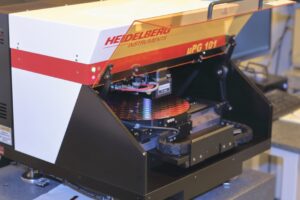Bare metal refers to a physical server or computing environment that operates without any virtualization layer. In essence, it is the raw hardware itself, devoid of any intermediary software that would typically abstract the hardware from the operating system. This direct access to the hardware allows for maximum performance and efficiency, as applications can utilize the full capabilities of the server without the overhead introduced by virtualization technologies.
Bare metal servers are often used in scenarios where performance is critical, such as high-frequency trading, scientific simulations, and large-scale data processing. The architecture of bare metal systems is straightforward. When a user deploys a bare metal server, they are essentially renting or owning a physical machine that runs a specific operating system directly on the hardware.
This contrasts sharply with virtualized environments, where multiple virtual machines (VMs) share the same physical resources. In a bare metal setup, the operating system has complete control over the hardware, which can lead to improved performance metrics such as lower latency and higher throughput. The absence of a hypervisor means that there is no additional layer consuming resources, allowing applications to run more efficiently.
Key Takeaways
- Bare metal refers to a single-tenant physical server that is dedicated to a single customer, providing direct access to the hardware without the need for a hypervisor or virtualization layer.
- Bare metal offers superior performance and reliability compared to virtualized environments, making it ideal for high-demand applications and workloads.
- By eliminating the overhead of virtualization, bare metal can improve efficiency, reduce latency, and provide consistent performance for critical workloads.
- High-performance computing (HPC) applications can benefit from bare metal’s direct access to hardware resources, enabling faster processing and better scalability.
- Bare metal is reshaping the landscape of virtualization and cloud computing by offering a more efficient and cost-effective alternative for demanding workloads.
The Advantages of Bare Metal: Why It’s a Game-Changer for Hardware Performance
One of the most significant advantages of bare metal servers is their unparalleled performance. Since there is no virtualization layer, applications can access CPU, memory, and storage resources directly, leading to faster processing times and reduced latency. For instance, in environments where real-time data processing is essential, such as financial services or online gaming, bare metal servers can provide the speed and responsiveness that virtualized solutions often struggle to match.
This direct access to hardware resources allows organizations to optimize their applications for maximum efficiency. Moreover, bare metal servers offer enhanced security features. With no hypervisor layer, the attack surface is significantly reduced, making it more challenging for malicious actors to exploit vulnerabilities.
This is particularly important for industries that handle sensitive data, such as healthcare and finance. Organizations can implement stringent security measures at the hardware level, ensuring that their data remains protected from unauthorized access. Additionally, bare metal environments allow for customized security configurations tailored to specific organizational needs, further enhancing their security posture.
How Bare Metal Can Improve Efficiency and Reduce Overhead

Efficiency in computing often hinges on resource allocation and management. Bare metal servers excel in this regard by providing dedicated resources to applications without the overhead associated with virtualization. In a virtualized environment, resources are divided among multiple VMs, which can lead to contention and inefficiencies. In contrast, bare metal servers allocate all available resources to a single application or workload, ensuring that it operates at peak performance without interference from other processes. Furthermore, the reduced overhead associated with bare metal deployments translates into cost savings for organizations.
While the initial investment in physical hardware may be higher than that of virtualized solutions, the long-term benefits often outweigh these costs. Organizations can achieve better performance with fewer servers, leading to lower operational expenses related to power consumption, cooling, and maintenance. Additionally, the simplicity of managing a bare metal environment can reduce administrative overhead, allowing IT teams to focus on strategic initiatives rather than routine maintenance tasks.
Harnessing the Power of Bare Metal for High-Performance Computing
| Metrics | Value |
|---|---|
| Processing Power | High |
| Memory Capacity | Large |
| Network Bandwidth | High |
| Latency | Low |
| Energy Efficiency | Optimized |
High-performance computing (HPC) environments demand exceptional processing power and efficiency. Bare metal servers are particularly well-suited for HPC applications due to their ability to deliver maximum performance without the constraints imposed by virtualization. In scientific research, simulations often require extensive computational resources; bare metal servers can provide the necessary power to run complex algorithms and process vast amounts of data quickly.
For example, in fields such as genomics or climate modeling, researchers rely on HPC clusters composed of bare metal servers to conduct simulations that would be infeasible on traditional virtualized infrastructure. The ability to harness multiple bare metal servers in parallel allows for significant speedups in computation times. Additionally, these environments can be optimized for specific workloads by configuring hardware components such as GPUs or high-speed interconnects tailored to the needs of particular applications.
The Impact of Bare Metal on Virtualization and Cloud Computing
While bare metal servers offer distinct advantages, they also play a crucial role in shaping the landscape of virtualization and cloud computing.
This hybrid approach enables organizations to leverage the benefits of both worlds—using bare metal for performance-critical applications while utilizing virtualized environments for less demanding workloads.
The integration of bare metal into cloud computing platforms has led to innovations such as bare metal as a service (BMaaS). This model allows organizations to provision physical servers on-demand through cloud interfaces, combining the flexibility of cloud computing with the performance benefits of bare metal. As businesses increasingly adopt hybrid cloud strategies, the ability to seamlessly transition between virtualized and bare metal environments becomes essential for optimizing resource utilization and meeting varying workload demands.
Best Practices for Implementing Bare Metal Solutions

Implementing bare metal solutions requires careful planning and consideration of several factors to ensure optimal performance and reliability. One best practice is to conduct a thorough assessment of workload requirements before deployment. Understanding the specific needs of applications—such as CPU power, memory capacity, and storage speed—can help organizations select the right hardware configurations for their bare metal servers.
Another critical aspect is network configuration. Since bare metal servers often operate in high-performance environments, ensuring low-latency network connections is vital. Organizations should consider using high-speed networking technologies such as InfiniBand or 10/40/100 Gigabit Ethernet to minimize bottlenecks and maximize throughput.
Additionally, implementing robust monitoring tools can help track performance metrics and identify potential issues before they impact operations.
Overcoming Challenges and Considerations When Using Bare Metal
Despite their advantages, deploying bare metal solutions comes with its own set of challenges. One significant consideration is the management of physical hardware. Unlike virtualized environments where resources can be easily scaled up or down through software interfaces, scaling bare metal requires physical intervention—adding or removing servers from racks can be time-consuming and labor-intensive.
Moreover, organizations must also consider the implications of hardware failure. In a bare metal environment, a single point of failure can lead to significant downtime if not addressed promptly. Implementing redundancy measures such as failover systems or load balancing can mitigate these risks but may add complexity to the infrastructure.
Additionally, organizations should establish comprehensive backup and disaster recovery plans tailored specifically for their bare metal deployments.
The Future of Bare Metal: Emerging Trends and Innovations
As technology continues to evolve, so too does the landscape of bare metal computing. One emerging trend is the increasing adoption of containerization alongside bare metal solutions. Containers offer lightweight alternatives to traditional virtualization by allowing applications to run in isolated environments without requiring full operating system instances.
This combination enables organizations to achieve high performance while maintaining flexibility in application deployment. Another innovation on the horizon is the integration of artificial intelligence (AI) and machine learning (ML) capabilities into bare metal environments. As these technologies become more prevalent across industries, organizations will seek out high-performance infrastructure capable of handling complex computations required for AI workloads.
Bare metal servers are well-positioned to meet these demands due to their ability to deliver consistent performance without the overhead associated with virtualization. In conclusion, while bare metal computing presents unique challenges and considerations, its advantages in terms of performance, efficiency, and security make it an attractive option for many organizations across various sectors. As trends continue to evolve and new technologies emerge, bare metal will likely remain a critical component of modern computing infrastructure.
If you are interested in exploring the interplay of moral rights, duties, and virtue in social ethics, you may find the article Exploring the Interplay of Moral Rights, Duties, and Virtue in Social Ethics to be a thought-provoking read.





















+ There are no comments
Add yours